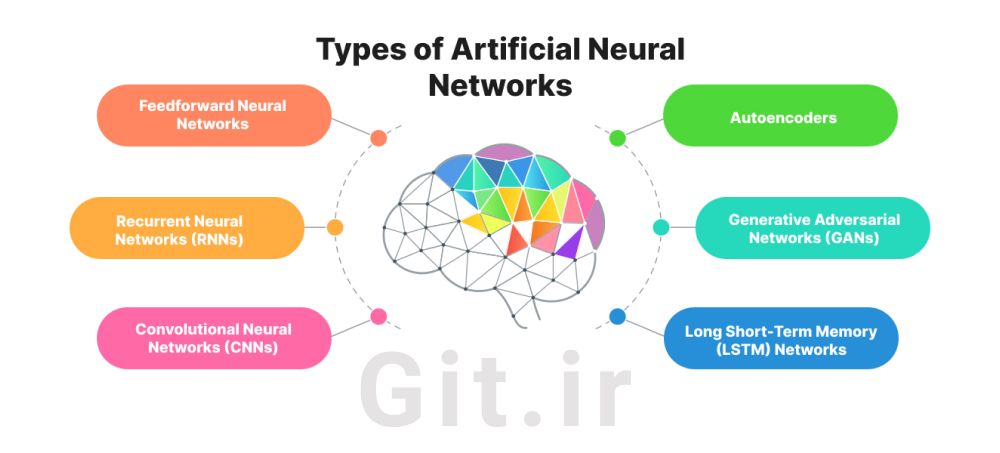What Is an Artificial Neural Network?
Artificial neural networks (ANNs) are advanced tools in machine learning that replicate the structure of the human brain. These networks are utilized in various sectors, including finance, engineering, and healthcare, to make predictions and extract insights from input data. The first artificial neural circuit was developed by Warren McCulloch and Walter Pitts in 1943. However, it wasn't until the 1980s that ANNs began to gain traction in mainstream data applications. Since that time, their popularity has surged, making them a crucial resource in numerous industries.

In this article, we will examine what ANNs are, how they function, and their significance in artificial intelligence. We will also highlight common examples of artificial neural networks across different fields, potential career paths in this area, and the limitations of this evolving technology.
What Is an Artificial Neural Network?
An artificial neural network (ANN) is a machine learning algorithm designed to emulate the functions of the human brain. When creating an ANN, you compile layers of interconnected nodes, often referred to as "neurons," which process and transmit information much like the nerve cells in our brains. These networks can recognize complex patterns, adapt to changing datasets, and provide real-time predictions.
ANs are mathematical models that apply complex algorithms to assess the strength of each "neuron" and its connections to other neurons. An ANN enhances its performance by comparing predicted outputs with actual results, a process known as “training” in data science.
There are various types of artificial neural network architectures available, depending on your area of interest. Common architectures include feedforward networks, recurrent networks, convolutional networks, and autoencoders. Each architecture is suited for specific tasks, such as image classification, natural language processing, or time series prediction.
Learn more: Understanding Artificial Intelligence: Definition, Applications, and Types
What Is the Purpose of an Artificial Neural Network, and What Can It Do?
The main purpose of designing an artificial neural network (ANN) is to create a system that learns from the input data and makes predictions or classifications based on that learning. ANNs are already being utilized in various industries, and their applications continue to expand. Some common uses of ANNs in different sectors include:
Image Classification: Certain types of ANNs can be trained to recognize objects in images, such as cars, animals, or buildings. This function typically employs a structure known as a convolutional neural network (CNN). To achieve this, you provide the network with large datasets of labeled images and adjust the connection weights until it can accurately identify objects in new images. For instance, electrical engineers working with autonomous vehicles often use image-processing techniques to detect road signs or pedestrians.
Natural Language Processing (NLP): Artificial neural networks (ANNs) can be used to analyze and generate human language, including both text and speech. This application is valuable for programs designed to read written text or understand spoken commands in human languages. Language processing can be complex, often requiring deeper ANNs than many standard architectures. A common ANN architecture used in NLP is the deep neural network (DNN), which powers technologies like voice assistants such as Siri or Alexa.
As a computational linguist, you would work on developing methods to integrate language and text into computational models. By combining this expertise with knowledge of artificial neural networks (ANNs), you can create NLP algorithms that process and understand human language.
Financial Forecasting: In the financial sector, ANNs can be applied to predict stock prices, exchange rates, and other financial indicators based on historical data. By analyzing data patterns and adjusting network connection weights, ANNs learn to make accurate predictions. Financial analysts use these forecasts to help companies make strategic decisions and anticipate future market trends.
Medical Diagnosis: In the medical field, artificial neural networks (ANNs) are valuable tools for diagnosing diseases from images, such as X-rays or MRIs. This is achieved by training the network on a large dataset of labeled images and fine-tuning its weights to accurately detect signs of disease. For instance, as a pathologist, you might use this technology to identify cancerous tissues or detect irregularities in cell structures.
By learning to design ANNs, you gain skills that can help you tackle complex problems across diverse fields. The ability of ANNs to learn from data and make predictions has paved the way for many groundbreaking advancements in AI and machine learning.
Why Are Artificial Neural Networks Important?
Artificial neural networks (ANNs) are essential because they enable the solving of complex problems that may be challenging to address with traditional algorithms. Key industries currently benefiting from the use of ANNs include:
Data Science: ANNs play a critical role in core data science tasks, such as analyzing large datasets and making predictions or classifications based on the data. As a data scientist, you can apply ANN techniques across various sectors to uncover insights and drive decision-making.
Engineering: ANNs are valuable for computer vision tasks, which involve analyzing and interpreting images and videos. As a computer vision engineer, your skills are in high demand in fields like autonomous vehicles and surveillance technology.
Customer Service: In customer service, ANNs utilize natural language processing (NLP) to analyze and generate human language. As an NLP engineer, you may focus on designing algorithms for customer service tools such as chatbots, email filters, and voice assistants.
Health Care: ANNs are highly valuable in health care applications, including medical imaging, disease diagnosis, and drug discovery. These tools can improve patient outcomes and help reduce health care costs. For example, as a physician, you might use ANN-powered image processing to support and confirm your diagnoses.
Finance: In the finance sector, ANNs are used for tasks such as predicting stock prices, detecting fraud, and managing risk. By using ANNs, financial institutions can make more informed decisions and lower risk levels. As a loan advisor, you might rely on ANNs to assess loan applications by evaluating risk factors.
Artificial neural networks (ANNs) are essential because they allow machines to learn from data and make smart, real-time decisions. By continuously learning from data, ANNs can adapt to changing information and adjust to new developments.
In addition, ANNs can process large volumes of data quickly, which is crucial in fields like finance, health care, and data science. This capability helps enhance safety, lower risk, and streamline daily operations across multiple industries.

Types of Artificial Neural Networks
When choosing an artificial neural network (ANN) model, there are several types available, each offering specific features for different applications. Some of the most widely used types include:
Feedforward Neural Networks: This is the most basic type of ANN, consisting of one or more layers of neurons, commonly used for tasks like classification and prediction.
Recurrent Neural Networks (RNNs): These ANNs are designed to handle data sequences, such as text or speech, making them useful for applications in language processing and speech recognition.
Convolutional Neural Networks (CNNs): CNNs are highly effective for processing images and videos, making them ideal for tasks like object detection and facial recognition.
Autoencoders: Autoencoders are valuable for unsupervised learning, as they can learn to reconstruct data without needing a specific target outcome.
Generative Adversarial Networks (GANs): This type of ANN uses two networks to create new data that closely resembles the original training data.
Long Short-Term Memory (LSTM) Networks: These specialized RNNs are useful for applications in speech and language processing, as well as robotics.
Each type of ANN offers distinct benefits and limitations, allowing you to select the best model for your specific needs. Understanding these differences can help you design more effective machine learning models.
Limitations of Artificial Neural Networks
Knowing the limitations of ANNs helps you use them more effectively. When working with ANNs, you may need to select specific algorithms based on the advantages and drawbacks that align with your application needs. Here are some common limitations you might encounter:
Data Size Requirements: ANNs require large amounts of labeled data for effective training. Without sufficient data, the network may struggle to make accurate predictions. For example, if a CNN is trained on only a few images, it may not accurately recognize new images.
Change Sensitivity: ANNs can be sensitive to variations in input data, which may lead to errors or unexpected outcomes. For instance, if a CNN is tasked with identifying an animal that is hiding or positioned oddly, it may fail to recognize it. Additionally, using the same data for both training and testing ANNs can limit the algorithm's accuracy.
Flexibility Limitations: ANNs trained for a specific task may not perform well in different tasks or contexts. For example, a CNN trained to recognize faces might struggle with identifying objects in other types of images, such as landscapes.
Despite these challenges, researchers and developers continually work to enhance ANNs and discover innovative solutions to overcome these limitations.
How to Enhance Your Skills in Artificial Neural Networks?
To deepen your understanding of artificial neural networks and strengthen your skills, consider enrolling in the following international training courses:
▶️ Artificial Neural Networks (ANN) with Keras in Python and R
▶️ Artificial Neural Networks for Business Managers in R Studio
▶️ Python for Deep Learning: Build Neural Networks in Python
▶️ neural networks for sentiment and stock price prediction
▶️ Neural Networks and Convolutional Neural Networks Essential Training